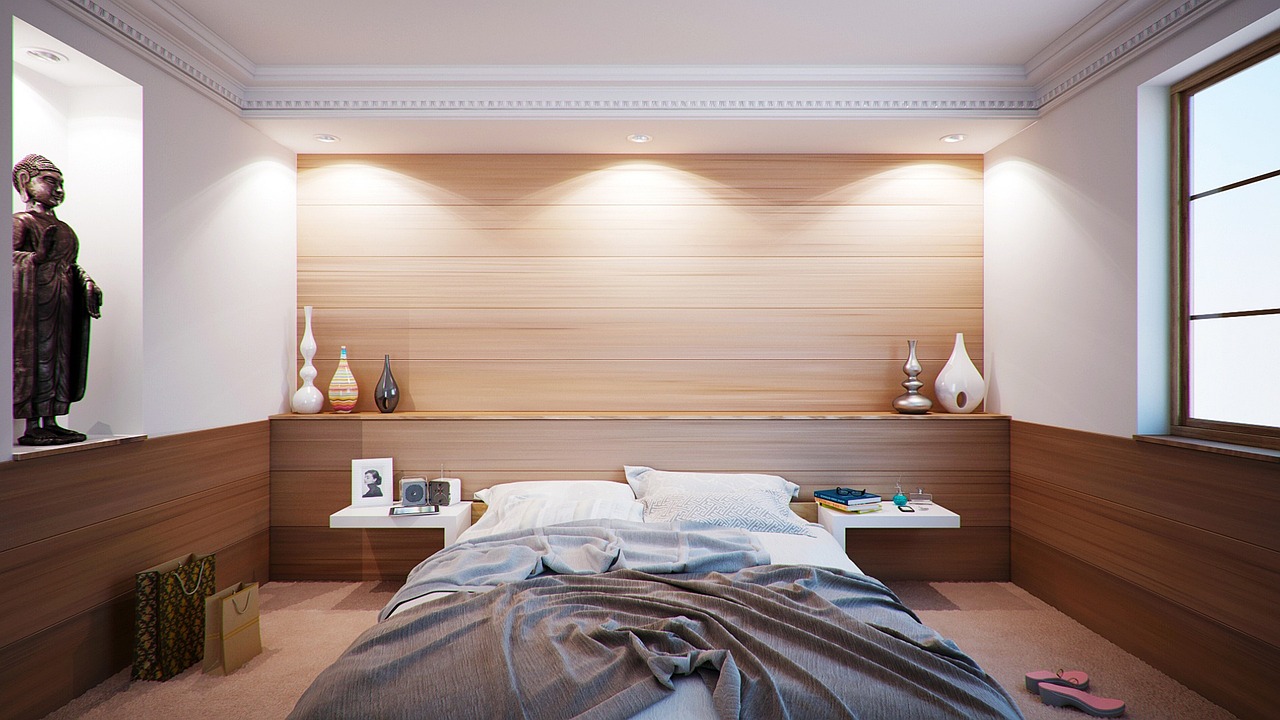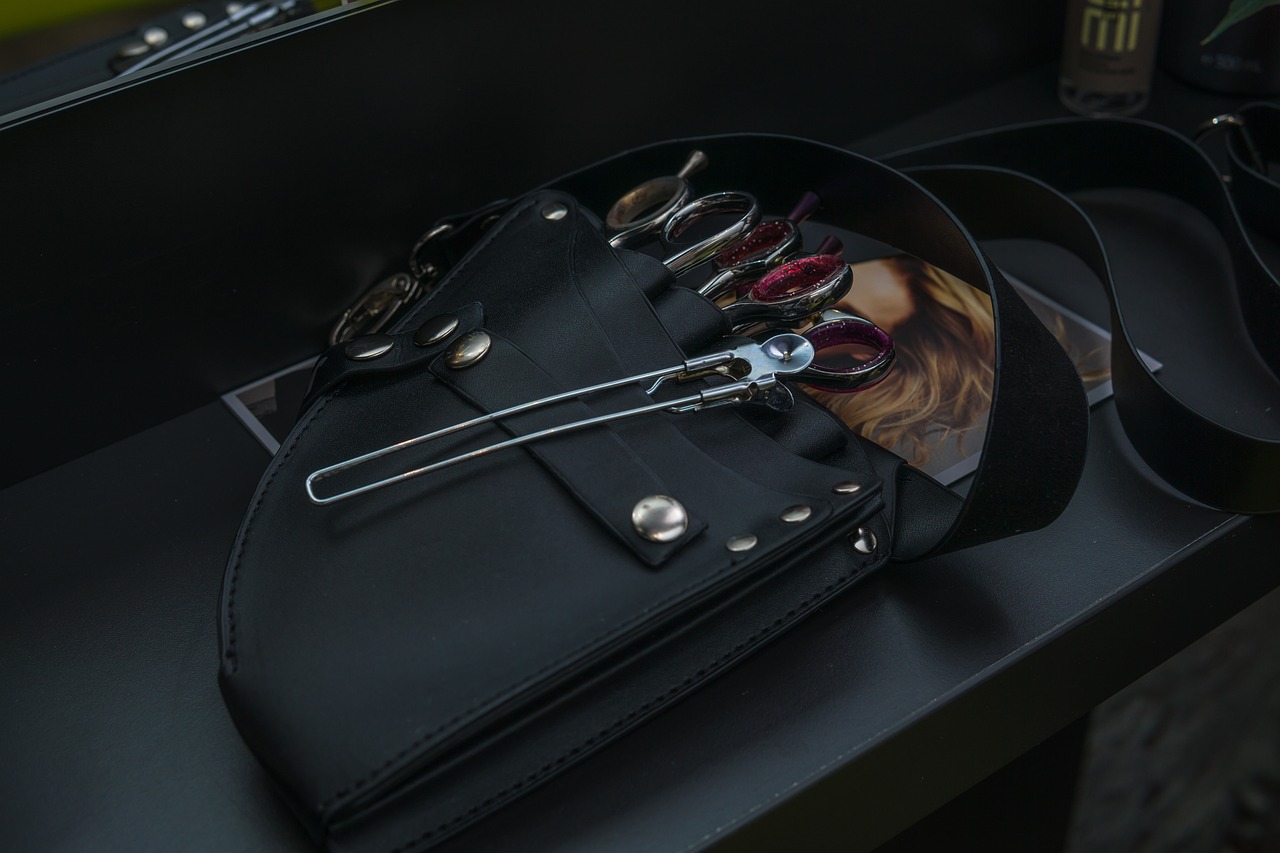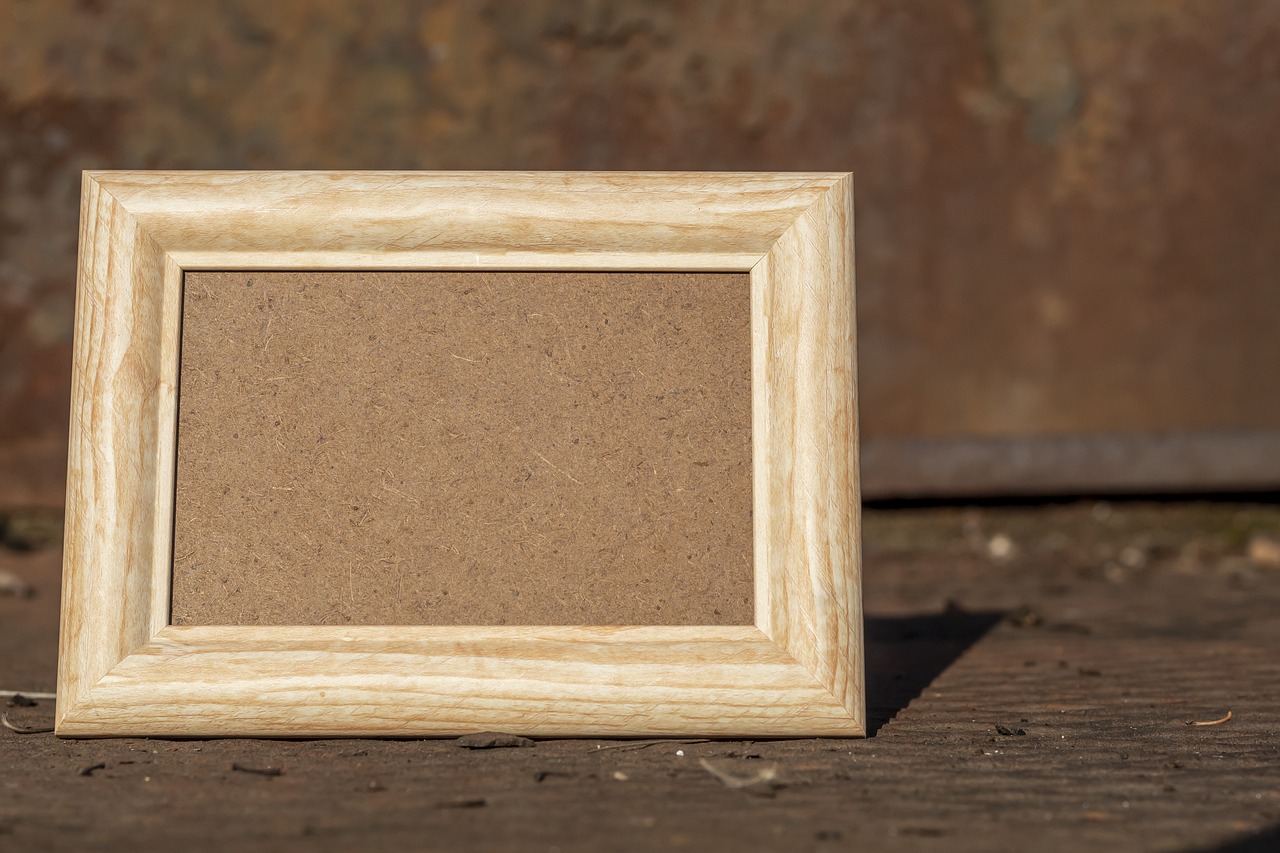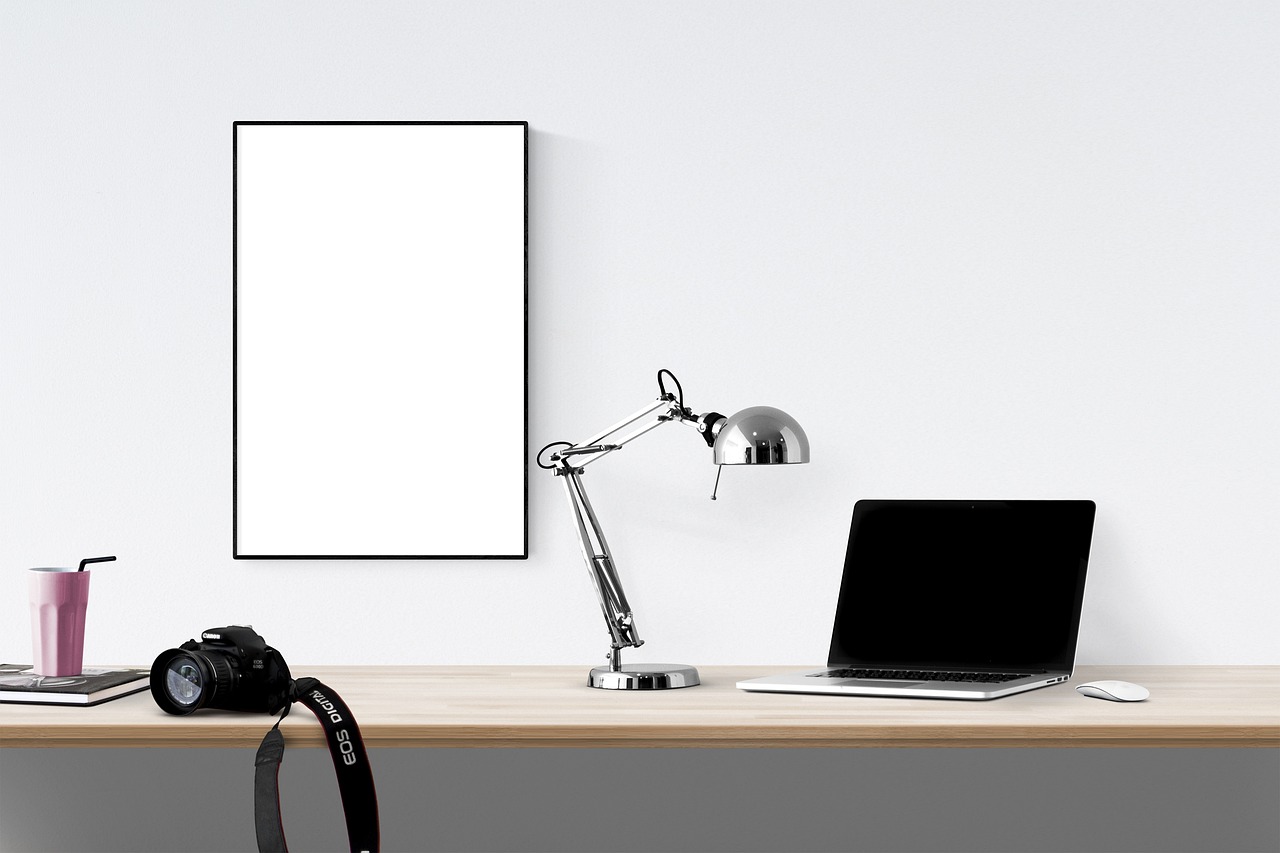Make Your Own Wooden Bed Frame: A DIY Guide
Creating your own wooden bed frame can be an incredibly rewarding project that not only enhances your bedroom's aesthetic but also gives you a sense of accomplishment. Imagine the satisfaction of lying in a bed that you crafted with your own hands! This guide will walk you through the process of creating a custom wooden bed frame, covering essential materials, tools, and step-by-step instructions to achieve a beautiful and functional piece of furniture. Whether you're a seasoned DIY enthusiast or a complete beginner, this guide is designed to make the journey enjoyable and straightforward.
When it comes to building a bed frame, selecting the appropriate type of wood is crucial for both durability and aesthetics. You want a wood that not only looks good but can also withstand the test of time. Here are a few popular wood options:
- Pine: Affordable and easy to work with, pine is a great choice for beginners. It’s lightweight but may not be as durable as hardwoods.
- Oak: Known for its strength and beautiful grain, oak makes for a sturdy and attractive bed frame. However, it can be a bit pricier.
- Maple: This hardwood is incredibly durable and has a fine, consistent grain, making it a fantastic option for a high-quality finish.
- Birch: Birch is strong and has a light color that can be easily stained or painted, providing versatility in design.
When picking the best wood for your bed frame project, consider factors such as your budget, the desired finish, and the overall design style you want to achieve. Each type of wood has its unique characteristics, so take your time to choose one that resonates with your vision.
Gathering the right tools and materials is vital for a smooth building process. You don’t want to be halfway through your project only to realize you’re missing a crucial tool! Here’s what you’ll need:
- Tools:
- Measuring tape
- Square
- Saw (circular saw or miter saw)
- Drill with bits
- Screwdriver
- Sander or sanding block
- Clamps
- Materials:
- Wood (your choice from the previous section)
- Wood screws
- Wood glue
- Finish (stain, paint, or sealant)
Having the right tools on hand not only makes the process easier but also ensures that your finished product is sturdy and visually appealing. So, before you dive into the project, double-check your toolkit!
Accurate measurements and precise cuts are fundamental to a sturdy bed frame. A small mistake in measurement can lead to an uneven or unstable structure. To avoid this, start by measuring your mattress size, as this will dictate the dimensions of your bed frame. Use a measuring tape and square to mark your cuts clearly on the wood. When it comes to cutting, ensure you are using the right saw for the job. A circular saw is great for straight cuts, while a miter saw can help you achieve angled cuts for a more intricate design.
Prioritizing safety while using power tools is essential. Always wear protective gear, including safety goggles and ear protection. Ensure your workspace is clean and free from clutter to prevent accidents. Familiarize yourself with the tools you’re using, and never rush through cuts; take your time to ensure accuracy.
Achieving smooth cuts enhances the overall look of your bed frame. To ensure your cuts are clean and professional-looking, consider the following techniques:
- Use a sharp blade for your saw to minimize splintering.
- Support the wood properly to prevent it from bending during the cut.
- Make slow, steady cuts to maintain control and accuracy.
By following these tips, you'll minimize the need for sanding later, saving you time and effort.
Once your wood pieces are cut, it's time to assemble the frame. Start by laying out all your pieces according to your design. Use wood glue to bond the joints and reinforce them with wood screws for added stability. Make sure to clamp the pieces together while the glue dries to ensure a tight fit. As you assemble, regularly check for squareness using your square, as this will help keep everything aligned and sturdy.
Adding finishing touches can elevate the appearance of your bed frame. Explore various staining, painting, and sealing options to protect the wood and enhance its beauty. A well-chosen finish not only protects the wood from wear and tear but also highlights its natural grain.
The right finish can significantly impact the look and durability of your bed frame. Consider options like:
- Stain: Enhances the wood grain while adding color.
- Paint: Allows for a pop of color and personalization.
- Sealant: Provides protection against moisture and scratches.
Choose a finish that complements your bedroom decor and suits your personal style.
To ensure the longevity of your wooden bed frame, regular maintenance is key. Dust it regularly with a soft cloth, and avoid using harsh chemicals that can damage the finish. If you notice any scratches, consider using a furniture touch-up marker or a bit of stain to repair them. Additionally, keep the bed frame away from direct sunlight to prevent fading over time.
1. How long does it take to build a wooden bed frame?
The time it takes can vary based on your skill level and the complexity of the design, but generally, you can expect to spend a weekend on the project.
2. What type of wood is best for a bed frame?
Hardwoods like oak and maple are excellent for durability, while softwoods like pine are great for budget-friendly builds. It ultimately depends on your personal preference.
3. Can I customize the size of my bed frame?
Absolutely! Just measure your mattress and adjust the dimensions accordingly. You can create a frame that fits perfectly in your space.
4. Do I need special tools to build a bed frame?
While basic tools like a saw, drill, and measuring tape are essential, you don’t need anything overly specialized. Most DIY enthusiasts will have the necessary tools at home.
5. How can I make my bed frame more stable?
Use sturdy joints and reinforcements, and consider adding a center support beam for larger frames. Proper assembly and quality materials are key to stability.

Choosing the Right Wood
When embarking on the journey of crafting your own wooden bed frame, one of the most pivotal decisions you'll make is . The type of wood you select not only affects the durability of your frame but also its overall aesthetic appeal. Think of it as the foundation of a house; without a solid base, everything else is at risk. So, what should you consider when picking your wood?
First off, you need to consider the hardness of the wood. Hardwoods like oak, maple, and cherry are excellent choices for bed frames because they are incredibly durable and can withstand the test of time. On the other hand, softwoods like pine and cedar are more affordable and easier to work with but may not hold up as well under heavy use. If you’re looking for a balance between cost and durability, consider using a combination of both types. For example, you can use hardwood for the frame and softwood for the slats.
Next, let's talk about appearance. Different woods have distinct grain patterns and colors that can dramatically affect the look of your bed frame. For instance, walnut offers a rich, dark hue with beautiful grain variations, while birch has a lighter, more uniform appearance. Here’s a quick comparison of some popular wood types:
| Wood Type | Durability | Appearance | Cost |
|---|---|---|---|
| Oak | High | Strong grain, light to dark color | Moderate |
| Pine | Medium | Light, straight grain | Low |
| Maple | High | Light color, fine grain | Moderate |
| Walnut | High | Dark, rich color, varied grain | High |
Lastly, don't forget about the sustainability of the wood. Opting for reclaimed or sustainably sourced wood not only helps the environment but also adds a unique character to your bed frame. Many people love the stories behind reclaimed wood; it’s like giving a second life to something that was once forgotten. You can also check for certifications such as FSC (Forest Stewardship Council) to ensure your wood is sourced responsibly.
In summary, when choosing the right wood for your bed frame, consider the hardness, appearance, and sustainability of your options. Each choice you make will contribute to the overall look and longevity of your frame. So, take your time, do your research, and pick the wood that resonates with your style and needs. After all, this bed frame will be a centerpiece in your bedroom—a place where you’ll unwind and dream, so it should reflect your personal taste!

Essential Tools and Materials
When embarking on your journey to create a custom wooden bed frame, gathering the right tools and materials is absolutely essential. Think of it as gathering your ingredients before cooking a gourmet meal; without the right components, the final product just won't taste right! So, let’s break down what you’ll need to ensure your DIY project goes off without a hitch.
First and foremost, you’ll need to choose the right type of wood. Depending on your style and budget, you might opt for pine, which is affordable and easy to work with, or go for a more durable option like oak or maple. Each type of wood has its own unique characteristics, so it’s important to consider both aesthetics and functionality. For instance, softer woods like pine are easier to cut and shape, but they may not stand up to wear and tear as well as hardwoods.
Next on the list is the tools. Here’s a rundown of the essential tools you’ll need:
- Measuring Tape: Precision is key, so a good measuring tape is a must-have.
- Square: This tool helps ensure your cuts are straight and your corners are square.
- Saw: A circular saw or miter saw is ideal for making clean cuts.
- Drill: A power drill will be necessary for making holes for screws and dowels.
- Screwdriver: To secure all your pieces together, you’ll need a reliable screwdriver.
- Sandpaper: For smoothing out any rough edges, sandpaper is essential.
- Clamps: These will hold your pieces together while the glue dries or while you screw them in place.
Now that we’ve covered the tools, let’s talk about materials. In addition to the wood, you’ll need:
- Screws: Choose screws that are appropriate for the thickness of your wood.
- Wood Glue: This will help reinforce the joints and ensure a sturdy frame.
- Finish: Whether you prefer paint, stain, or sealant, having a finish will protect your wood and enhance its beauty.
Remember, the quality of your tools and materials directly influences the outcome of your project. Investing a little more in high-quality wood and tools can save you headaches down the road and result in a bed frame that not only looks stunning but also lasts for years to come. So, take your time to gather everything you need, and you’ll be well on your way to creating a beautiful piece of furniture that you can be proud of!
Q: What type of wood is best for a bed frame?
A: The best type of wood depends on your budget and desired aesthetics. Pine is a great beginner option, while hardwoods like oak or maple offer durability and a beautiful finish.
Q: Do I need any special tools to build a bed frame?
A: While basic tools like a saw, drill, and measuring tape are essential, having clamps and a square will make the process much smoother and more accurate.
Q: How long does it take to build a wooden bed frame?
A: The time it takes can vary based on your skill level and the complexity of the design, but generally, you can expect to spend a weekend on the project.
Q: Can I customize the dimensions of my bed frame?
A: Absolutely! One of the great things about building your own bed frame is that you can tailor it to fit your mattress size and personal style.

Measuring and Cutting Wood
When it comes to building your own wooden bed frame, measuring and cutting wood accurately is absolutely crucial. Think of it like baking a cake; if you don't measure the ingredients correctly, the end result can be a disaster! So, let's dive into the nitty-gritty of how to get those measurements right and make those cuts clean and precise.
First, grab your measuring tape and a pencil. Start by measuring the dimensions of your mattress, as this will dictate the size of your bed frame. Remember, you want a snug fit, but not so tight that you can't get the mattress in! A good rule of thumb is to add a couple of inches to both the length and width of your mattress for the frame. For example, if your mattress is 60 inches wide and 80 inches long, aim for a frame that is about 62 inches wide and 82 inches long.
Once you have your measurements, it's time to mark the wood. Use your pencil to make clear, visible marks on the wood where you will cut. This step is essential because it helps ensure that your cuts will be straight and accurate. If you're feeling a bit fancy, you might even want to use a square to draw a straight line across the wood, giving you a guide to follow when you cut.
Now, let's talk about cutting. You have a few options here: a hand saw, a circular saw, or a miter saw. Each tool has its pros and cons, but if you're a beginner, a circular saw is often the easiest to handle. Just remember to follow these important tips:
- Stabilize the Wood: Always secure your wood on a stable surface. You don’t want it moving around while you’re cutting!
- Follow the Line: Keep your saw aligned with the marked line to ensure a straight cut.
- Take Your Time: Rushing can lead to mistakes, so take a deep breath and cut at a steady pace.
After you’ve made your cuts, it’s a good idea to check the dimensions again. This is where the saying “measure twice, cut once” really comes into play. If your pieces are too long or too short, you might have to start over, which can be frustrating!
Finally, once all your pieces are cut, take a moment to sand the edges. This will not only make your bed frame look more polished but also prevent any splinters from ruining your beautiful creation. A smooth edge is like a cherry on top of a sundae; it just makes everything better!
In summary, measuring and cutting wood is a fundamental step in building your own wooden bed frame. By following these guidelines, you’ll be well on your way to crafting a beautiful and sturdy piece of furniture that you can cherish for years to come.

Safety Precautions
When embarking on your DIY wooden bed frame project, safety should be your top priority. Working with power tools and sharp materials can be risky, but with the right precautions, you can minimize the chances of accidents and injuries. First and foremost, always wear appropriate protective gear. This includes safety goggles to protect your eyes from sawdust and flying debris, ear protection to shield your hearing from loud machinery, and a dust mask to prevent inhalation of harmful particles. Think of these items as your armor; they will keep you safe as you venture into the world of woodworking.
Additionally, it's essential to maintain a clean and organized workspace. A cluttered area can lead to tripping hazards or losing track of tools, which can result in injuries. Before you start cutting or assembling, take a moment to clear your work surface and ensure all tools are in their designated spots. Also, make sure that your workspace is well-lit. Poor lighting can lead to mistakes, which might not only ruin your project but could also pose safety risks.
Another critical aspect of safety is understanding how to use your tools properly. Each power tool comes with its own set of instructions, and familiarizing yourself with these guidelines can make a world of difference. For example, when using a saw, always keep your hands at a safe distance from the blade and never reach across the cutting line. If you're unsure about how to operate a tool, don't hesitate to ask for help or watch tutorial videos. Knowledge is power, and in this case, it can also be a lifesaver.
Moreover, consider the environment around you while working. Make sure there are no flammable materials nearby, especially when using tools that generate heat or sparks. It's also wise to have a first aid kit on hand, just in case of minor injuries. While we hope that you won't need it, being prepared is always better than being caught off guard.
In summary, by adhering to these essential safety precautions, you can create a safer workspace and enjoy your woodworking experience. Remember, a little caution goes a long way in ensuring that your DIY adventure remains enjoyable and accident-free!
As you embark on your journey to create a wooden bed frame, you might have some questions. Below are some common queries that many DIY enthusiasts have:
- What type of wood is best for a bed frame? - While it depends on your personal preference, hardwoods like oak or maple are known for their durability, while softwoods like pine are lighter and easier to work with.
- How long does it take to build a bed frame? - Depending on your skill level and the complexity of the design, it can take anywhere from a few hours to a couple of days.
- Do I need special tools to build a bed frame? - Basic tools like a saw, drill, and measuring tape are essential. However, having additional tools like a sander and clamps can make the process smoother.
- Can I customize my bed frame design? - Absolutely! One of the best parts of a DIY project is the freedom to customize your design to fit your style and needs.

Tips for Smooth Cuts
When it comes to crafting your own wooden bed frame, achieving smooth cuts is essential for both aesthetics and structural integrity. Think of it like cooking; the better your ingredients are prepared, the more delicious the final dish will be. Here are some key tips to ensure your cuts are as clean as a whistle:
First and foremost, always use a sharp blade. A dull blade is like a spoon trying to cut through a steak—it just won't work well and can lead to jagged edges. Whether you're using a table saw, miter saw, or hand saw, ensure that the blade is sharp and appropriate for the type of wood you're working with. This will not only give you cleaner cuts but also make the process smoother and safer.
Next, measure twice, cut once. This age-old adage holds true for a reason! Taking the time to double-check your measurements can save you from making costly mistakes. Use a reliable measuring tape and a square to mark your cuts accurately. This precision will help you avoid unnecessary adjustments later on, allowing your bed frame to fit together seamlessly.
Another tip is to use a saw guide. A saw guide helps you maintain a straight line while cutting, which is especially useful for longer boards. You can create a simple guide using a straight piece of wood clamped to your workpiece. This will act as a fence for your saw, ensuring that your cuts are straight and true. Think of it as training wheels for your saw—helping you stay on the right path!
Additionally, consider the speed at which you are cutting. Rushing through cuts can lead to mistakes and splintering. Instead, take your time and let the saw do the work. A steady and controlled pace will result in cleaner cuts and a more enjoyable woodworking experience.
Lastly, if you find that you're still struggling with rough edges, don't hesitate to use a sanding block or an electric sander to smooth out any imperfections. Just remember, a little bit of sanding can go a long way in enhancing the overall look of your bed frame. It’s like putting the final touches on a masterpiece—every detail counts!
In summary, achieving smooth cuts is all about preparation, precision, and patience. By following these tips, you'll be well on your way to creating a beautiful wooden bed frame that not only looks great but is also built to last.
- What type of wood is best for a bed frame?
Hardwoods like oak or maple are often preferred for their durability, while softer woods like pine are more affordable and easier to work with.
- Do I need special tools to make a bed frame?
While basic hand tools can suffice, using power tools like a miter saw and a drill can make the process much easier and more efficient.
- How long does it take to build a bed frame?
The time it takes can vary, but most DIYers can complete a bed frame in a weekend if they have all their materials and tools ready.
- Can I customize the size of my bed frame?
Absolutely! One of the best parts of building your own bed frame is that you can tailor it to fit your specific mattress size and personal style.

Assembling the Frame
Once you've meticulously cut your wood pieces, the exciting part begins: assembling the frame! This is where your vision starts to take shape, transforming raw materials into a beautiful bed frame. To kick things off, you’ll want to lay out all your pieces in the order they'll be assembled. Think of it as a puzzle; having everything organized makes it easier to see how everything fits together.
Start with the side rails and the headboard. Position the side rails parallel to each other, ensuring they're the same distance apart as the width of your mattress. This is important because a miscalculation here could lead to a wobbly frame or, worse, a mattress that doesn't fit! Next, attach the headboard to the side rails using wood screws. Pre-drilling holes can be a game changer here, as it prevents the wood from splitting and ensures a snug fit. Use a level to verify that the headboard is straight before securing it completely.
Now, let’s talk about the footboard. Just like the headboard, align it with the side rails and secure it in the same manner. At this point, you should have a rectangular frame that resembles a large picture frame. It’s crucial to ensure all corners are square; a square frame not only looks better but also provides better stability. A carpenter's square is your best friend here!
Once the main structure is assembled, it’s time to add the slats. These are the horizontal pieces that support your mattress. They should be evenly spaced to provide adequate support, so consider using a measuring tape to mark where each slat will go. Typically, slats are placed about 3 inches apart, but this can vary based on the mattress type. Secure each slat with screws or nails, ensuring they are level with each other to avoid any uncomfortable sagging.
Finally, give your frame a good inspection. Look for any loose screws or wobbling parts. Tighten everything up, and if you find any rough edges, a bit of sanding can work wonders. After all, you want your bed frame to not only look good but also feel good to use. With everything in place, you can now stand back and appreciate your hard work. You’ve transformed a pile of wood into a stunning piece of furniture!
Q: How long does it take to assemble a wooden bed frame?
A: The time can vary depending on your skill level and the complexity of the design, but generally, it can take anywhere from a few hours to a full day.
Q: Do I need any special skills to assemble a bed frame?
A: Basic woodworking skills are helpful, but with the right tools and instructions, even beginners can successfully assemble a bed frame.
Q: Can I customize the design of my bed frame?
A: Absolutely! One of the best parts of building your own frame is the ability to customize it to fit your style and needs.
Q: What if I make a mistake while assembling?
A: Don’t worry! Mistakes happen. Most can be corrected by adjusting screws or using wood filler for small gaps.

Finishing Touches
When it comes to crafting your own wooden bed frame, the finishing touches are what truly transform a basic structure into a stunning centerpiece for your bedroom. Imagine your bed frame as a blank canvas; the right finish can turn it into a masterpiece that reflects your personal style. Whether you prefer a rustic look or a sleek modern finish, the choices you make in this phase will not only enhance the beauty of your frame but also protect it from wear and tear.
There are several options for finishing your wooden bed frame, and each has its own unique characteristics. You can choose to stain, paint, or seal the wood. Staining allows the natural grain to shine through while adding depth and color, creating a warm and inviting atmosphere. On the other hand, painting offers a world of possibilities with colors that can match or contrast with your bedroom decor. Lastly, sealing the wood ensures durability and protects against moisture, which is essential for maintaining the integrity of your frame over time.
Before diving into the finishing process, it’s crucial to prepare the surface of your bed frame properly. Start by sanding the wood to achieve a smooth finish. This step is vital because it removes any rough spots, splinters, or imperfections that could detract from the final appearance. Use a fine-grit sandpaper and make sure to sand in the direction of the grain. After sanding, wipe the surface with a damp cloth to remove dust particles, ensuring that your finish adheres properly.
Now, let’s talk about the finishes themselves. Below is a table summarizing the different types of finishes you can consider for your wooden bed frame:
| Finish Type | Characteristics | Best For |
|---|---|---|
| Stain | Enhances wood grain, adds color | Natural look lovers |
| Paint | Completely covers wood, offers color variety | Bold design choices |
| Sealant | Protects against moisture and wear | Longevity seekers |
Once you've chosen your finish, apply it using a brush or cloth, depending on the type of product. For stains, use a clean cloth to rub the stain into the wood, allowing it to penetrate for a richer color. For paints, a brush will help you achieve an even coat, while sealants can often be applied with either a brush or a sprayer for a smooth finish. Remember to follow the manufacturer's instructions for drying times and the number of coats needed for optimal results.
Finally, after your bed frame has been finished and dried, consider adding some protective pads on the legs to prevent scratches on your floor. This small step can make a big difference in maintaining both your bed frame and your flooring. The finishing touches are not just about aesthetics; they are about ensuring that your hard work lasts for years to come.
Q: How long does it take for the finish to dry?
A: Drying times vary based on the product used, but generally, it can take anywhere from a few hours to several days. Always refer to the manufacturer's instructions for specific guidance.
Q: Can I change the finish later if I don't like it?
A: Yes, you can change the finish, but it requires sanding down the existing finish before applying a new one. This can be a labor-intensive process, so choose wisely!
Q: What is the best way to maintain my finished bed frame?
A: Regular dusting and occasional cleaning with a damp cloth will help maintain your bed frame's appearance. Avoid harsh chemicals that can damage the finish.

Choosing a Finish
When it comes to finishing your wooden bed frame, the choice of finish can make all the difference. Not only does it enhance the aesthetic appeal of your creation, but it also plays a crucial role in protecting the wood from wear and tear. Think of the finish as the icing on the cake; it’s what makes your hard work truly shine! So, how do you choose the right finish for your project? Let's dive into the various options available and how to make the best choice for your needs.
There are several types of finishes to consider, each with its unique characteristics and benefits. Here’s a quick overview of the most popular options you might want to consider:
- Varnish: This is a durable finish that provides a hard protective layer. It’s great for high-traffic areas and is available in various sheens, from matte to glossy.
- Polyurethane: Known for its toughness, polyurethane is perfect for those who want a long-lasting finish. It’s resistant to scratches and water, making it ideal for a bed frame.
- Stain: If you want to enhance the natural beauty of the wood while adding color, stains are an excellent choice. They penetrate the wood and allow the grain to show through.
- Oil: Oils like linseed or tung oil nourish the wood and provide a warm, natural look. However, they require more frequent reapplication compared to other finishes.
When selecting a finish, consider the following factors:
- Desired Appearance: Do you want a glossy finish that reflects light or a matte finish that offers a more rustic look? Your choice should align with your personal style and the overall decor of your bedroom.
- Durability Needs: If you have pets or children, opting for a more durable finish like polyurethane might be wise. On the other hand, if your bed frame is more for decorative purposes, a lighter finish may suffice.
- Application Method: Some finishes are easier to apply than others. If you're a beginner, you might want to start with a user-friendly option like a stain or oil.
Before applying the finish, it's essential to prepare the wood properly. Ensure that the surface is clean and free of dust. Sanding the wood before applying the finish will help achieve a smoother application and better adhesion. Remember, the finish you choose can significantly impact the longevity and appearance of your bed frame, so take your time to select wisely.
Ultimately, choosing the right finish is about balancing aesthetics, durability, and ease of application. Don’t hesitate to experiment with different finishes on scrap pieces of wood to see what you like best before committing to your bed frame. After all, your bed is where you’ll spend a third of your life, so make it a beautiful and inviting space!
Q: How long does it take for the finish to dry?
A: Drying times can vary based on the type of finish used. Generally, oil finishes may take a couple of days, while varnish and polyurethane can dry to the touch in a few hours but may require longer to cure completely.
Q: Can I apply a stain over a previously finished surface?
A: It depends on the type of finish already on the wood. If the existing finish is compatible, you can lightly sand the surface and apply the stain. However, if it's a glossy finish, it may be best to strip it first.
Q: How often should I reapply the finish?
A: This depends on the type of finish and the amount of wear and tear your bed frame experiences. Generally, oil finishes may need reapplication every 6-12 months, while varnish and polyurethane can last several years.

Maintenance Tips
Once you've crafted your stunning wooden bed frame, the journey doesn’t end there! Just like a fine wine, your bed frame deserves a little care to keep it looking fabulous and functioning well. Regular maintenance is essential to ensure that your piece of furniture stands the test of time. So, what should you do to maintain that beautiful creation? Here are some practical tips.
First and foremost, dusting your bed frame regularly is crucial. Dust particles can accumulate and, over time, lead to scratches or dullness in the finish. A simple microfiber cloth can work wonders—just gently wipe down the surfaces to keep them clean. You might be surprised at how much better your frame looks with just a little TLC!
Next, consider the environment where your bed frame lives. Humidity can be a wooden bed frame's worst enemy. If you live in a particularly humid area, it’s wise to invest in a dehumidifier or keep windows open for ventilation. Wood can swell or warp when exposed to excessive moisture, which is something you definitely want to avoid. Think of your bed frame as a delicate flower; it thrives in the right conditions!
Another important aspect is protecting the finish. If you’ve opted for a stain or paint, ensure that you use coasters or felt pads under any items placed on the bed frame. This helps prevent scratches and keeps the finish intact. If you notice any scuffs or scratches, don’t panic! A little touch-up paint or wood filler can work miracles, restoring your frame to its former glory.
Finally, consider applying a protective sealant every few years. This not only enhances the beauty of the wood but also adds a layer of protection against spills or stains. Think of it as a shield that guards your masterpiece! When choosing a sealant, make sure it’s compatible with the finish you’ve applied to your bed frame.
In summary, maintaining your wooden bed frame is all about being proactive. Regular dusting, controlling humidity, protecting the finish, and applying sealants will keep your bed frame looking as good as new for years to come. Just remember, a little effort goes a long way in preserving the beauty and functionality of your handcrafted treasure!
Q1: How often should I dust my wooden bed frame?
A1: It's best to dust your bed frame at least once a week to prevent dust buildup and maintain its shine.
Q2: Can I use any type of cleaner on my wooden bed frame?
A2: Avoid harsh chemicals. Instead, use a gentle wood cleaner or a mixture of mild soap and water for cleaning.
Q3: What should I do if my bed frame starts to squeak?
A3: Tighten any loose screws or bolts. If the problem persists, consider lubricating the joints with a bit of furniture wax.
Q4: How can I prevent scratches on my bed frame?
A4: Use coasters under items and avoid dragging anything across the surface. Felt pads can also be helpful.
Q5: Is it necessary to apply a sealant?
A5: While it's not mandatory, applying a sealant every few years can significantly extend the life of your bed frame and enhance its appearance.
Frequently Asked Questions
- What type of wood is best for a bed frame?
Choosing the right wood is crucial for both durability and aesthetics. Hardwoods like oak or maple are fantastic for their strength and beauty, while softwoods like pine are easier to work with and more affordable. Think about what fits your style and budget!
- What tools do I need to build a wooden bed frame?
You’ll need some essential tools, including a saw for cutting, a drill for assembling, and measuring tools like a tape measure and square. Having clamps on hand can also help keep everything steady while you work. Remember, the right tools make the job easier!
- How do I ensure accurate measurements when cutting wood?
Accurate measurements are key! Always measure twice and cut once. Use a reliable tape measure and a square to mark your cuts clearly. If you’re unsure, don’t hesitate to ask someone for a second opinion. It’s better to be safe than sorry!
- What safety precautions should I take while using power tools?
Safety first! Always wear protective gear like goggles and gloves. Make sure your workspace is clean and well-lit. Familiarize yourself with the tools before using them, and never rush through cuts. Taking your time can prevent accidents!
- How can I achieve smooth cuts on the wood?
To get those smooth, professional-looking cuts, use a sharp blade and let the saw do the work. Avoid forcing the wood through the saw; instead, let it glide. If you do need to sand, use fine-grit sandpaper for a polished finish!
- What are some tips for assembling the bed frame securely?
When assembling, ensure all joints are tight and use wood glue along with screws for extra strength. Consider using corner brackets for added stability. Take your time to align everything properly; a sturdy frame makes for a better night’s sleep!
- How do I choose the right finish for my bed frame?
The finish you choose can drastically change the look of your frame. If you want to show off the wood grain, go for a clear varnish or oil. For a pop of color, consider stains or paints. Just remember to pick a finish that suits your style and protects the wood!
- What maintenance is required to keep my wooden bed frame in good condition?
Regular maintenance is key! Dust your bed frame often and use a damp cloth to clean it. Avoid harsh chemicals that can damage the finish. Every few years, consider reapplying the finish to keep it looking fresh and to protect against wear and tear!



















